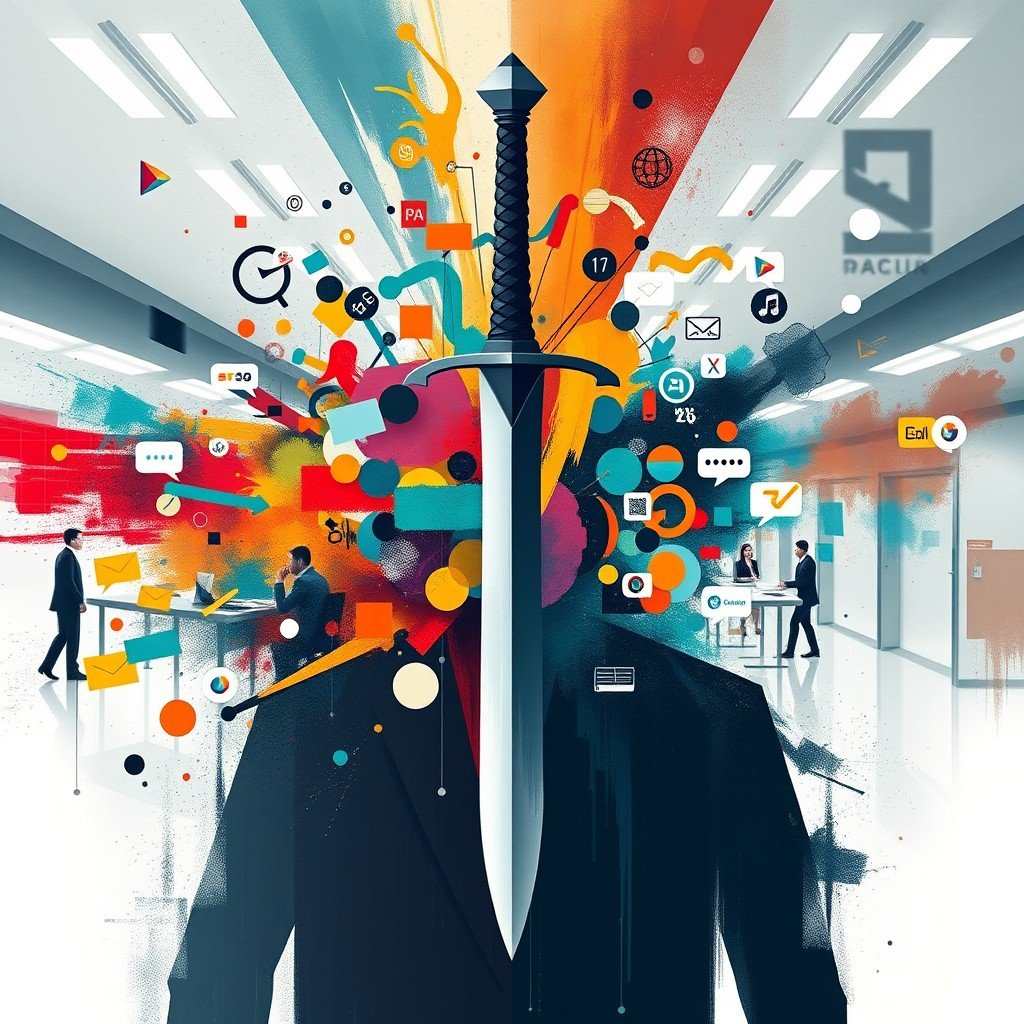In today’s world, creativity has become the darling buzzword of the corporate lexicon. From visionary CEOs declaring themselves champions of innovation to tech start-ups with bean bags and ping-pong tables in their breakrooms, the idea of corporate creativity has permeated every nook and cranny of the business landscape. But amidst all the brainstorming sessions and open-plan offices, there lies a darker side to this so-called creative renaissance. When creativity is harnessed for profit rather than purpose, what once was an agent of change and originality becomes diluted, controlled, and at worst, dangerous.
The Allure of Corporate Creativity: A Double-Edged Sword
At first glance, the fusion of creativity and corporate strategy seems like a match made in heaven. After all, who wouldn’t want their office buzzing with the energy of constant ideation, where every employee is an artist and every product a masterpiece? In theory, injecting creativity into corporate structures fosters innovation, encourages out-of-the-box thinking, and differentiates companies in an increasingly competitive market. But let’s not kid ourselves: the embrace of creativity in the corporate world is often more about aesthetics than ethos.
Corporate creativity often involves a selective, sanitised version of innovation that neatly aligns with profitability goals. It is creativity with a leash, creativity fenced in by focus groups, risk assessments, and return-on-investment calculations. Real creativity — the kind that challenges the status quo, pushes boundaries, and sometimes fails spectacularly — is far less welcome. Instead, we often see a form of faux creativity where the emphasis is on appearance rather than substance. The result is a version of creativity that is watered down, neutered, and stripped of its power to genuinely disrupt.
Innovation by Committee: The Dilution of Ideas
One of the greatest dangers of corporate creativity is the tendency to innovate by committee. Unlike the spontaneous bursts of genius that characterise true creativity, corporate innovation often involves endless rounds of meetings, stakeholder input, and internal reviews. While this process aims to refine ideas, it often has the opposite effect: diluting them to the point of blandness.
Consider, for example, the modern phenomenon of “rebranding.” Many companies embark on costly rebranding exercises, changing logos and slogans to appear more contemporary or relevant. While these efforts are dressed up as creative endeavours, they are often superficial, lacking any real connection to a deeper brand story or identity. The end product is typically a watered-down version of the original concept, devoid of personality or impact. It’s creativity by consensus, where the desire to offend no one leads to work that excites no one.
The Risk of Monoculture: Stifling Diversity and Originality
Another peril of corporate creativity is the risk of creating a monoculture. In the rush to hire the next “creative genius,” companies often fall into the trap of recruiting from the same pool of candidates — those who have worked at the same trendy companies, studied at the same prestigious schools, and think along the same lines. This can lead to an echo chamber effect, where a narrow band of ideas is amplified and reinforced, while truly diverse perspectives are sidelined.
This lack of diversity stifles genuine creativity and innovation. When everyone is singing from the same hymn sheet, the chance of breakthrough ideas — those that are truly disruptive and original — diminishes. Instead, what we get is a homogeneity of thought, where every company’s creative output starts to look and feel the same.
Take, for example, the tech industry’s obsession with sleek minimalism. While Apple’s success with minimalist design is commendable, the subsequent wave of “me-too” products from competitors shows a worrying lack of original thinking. Everyone wants to replicate the success of the market leader, but in doing so, they forget the creative thinking that made that leader stand out in the first place. The result? A market flooded with indistinguishable products, each claiming to be more innovative than the last.
Creativity as a Buzzword: The Danger of Hollow Branding
Let’s not forget the dark side of creativity’s ascendance in the corporate world: the weaponisation of the concept itself. “Creativity” has become a branding buzzword, slapped onto mission statements, marketing campaigns, and job titles with little regard for what it actually means. Every company is now “disruptive,” “innovative,” and “creative,” regardless of whether these descriptors bear any relation to their actions or culture.
This commodification of creativity reduces it to a mere marketing tool, stripping it of its deeper significance and transformative power. It’s a classic case of Orwellian doublespeak, where words are divorced from their true meaning and used to perpetuate the status quo. When “creativity” becomes just another way to sell more products or boost share prices, it loses its ability to genuinely inspire, challenge, or provoke change. It becomes, in essence, a hollow shell of its former self.
The Ethics of Innovation: When Creative Ideas Have Consequences
Now, let’s talk about something a bit more sinister: the ethical implications of corporate creativity. Not all creative ideas are benign. In the pursuit of innovation, companies have been known to cross ethical lines, sometimes with disastrous consequences.
Consider the infamous case of the Volkswagen emissions scandal, where the company’s engineers devised a “creative” solution to circumvent environmental regulations. What began as an innovative idea to solve a problem quickly spiralled into one of the biggest corporate frauds in history, causing significant harm to the company’s reputation, not to mention the environment. Here, the danger of corporate creativity is laid bare: when the pursuit of innovation is untethered from ethical considerations, it can lead to outcomes that are not just uncreative but downright destructive.
The Future of Creativity in Corporate Culture: Finding a Balance
So, where does this leave us? Should corporations abandon their attempts at fostering creativity and innovation altogether? Not necessarily. But there does need to be a reckoning — a realisation that creativity cannot be manufactured in boardrooms or conjured from thin air with a few colourful bean bags and a “brainstorming session.” Real creativity requires freedom, risk-taking, and, crucially, a willingness to fail.
To foster genuine creativity, corporations need to create environments where employees feel safe to experiment, where diversity of thought is genuinely valued, and where creativity is not just a branding exercise but a core part of the organisational culture. This means moving away from a risk-averse mindset that prioritises short-term gains over long-term vision and embracing a more holistic approach to innovation that considers the social, ethical, and environmental impacts of creative ideas.
Conclusion: Reclaiming Creativity from Corporate Clutches
In conclusion, the danger of corporate creativity lies not in the act of being creative itself but in the way it is often co-opted, commodified, and constrained by the very structures that claim to champion it. To reclaim creativity from the clutches of corporate agendas, we need to remember what true creativity looks like — and it doesn’t always fit neatly into a quarterly report or a marketing campaign. It’s messy, it’s risky, and it’s often uncomfortable. But it’s also where the magic happens.
So, next time you find yourself in a “creative brainstorming session,” ask yourself: are we really fostering creativity here, or are we just paying lip service to it? The answer might just surprise you. And if it doesn’t, well, maybe it’s time to find a different room.

